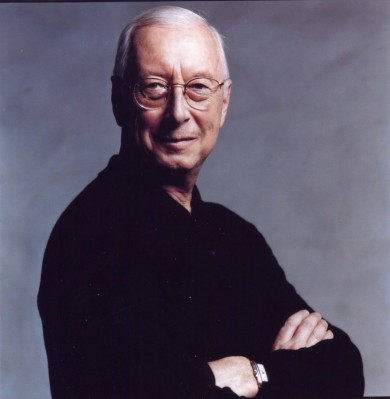Les Arts Florissants makes a delightful Miami debut
The New World Center was transformed into an intimate Baroque opera house on Wednesday night when five singers and four instrumentalists from the renowned ensemble Les Arts Florissants presented “Airs sérieux et à boire” (Serious Airs and Drinking Songs). A collaboration between the Miami Bach Society and the Consulate General of France, the event was a delightful coda to the annual Tropical Baroque Festival and marked the local debut of renowned Baroque specialist William Christie.
Christie and his team of musicians and vocalists have played a seminal role in reviving French Baroque opera and vocal music. With annual performances in Caen and a festival in France’s Vendée region plus international tours and over a hundred recordings, the group has not only staged the major works of such masters as Lully and Rameau but also explored the musicological byways of the era, bringing some fascinating discoveries to light. In the Miami Beach performance, the first of an American tour, the beguiling melodies of Michel Lambert were a particularly worthy resuscitation.
For this program, Christie combined a series of air de cour into a mini-operatic pastiche. (He has revived the pastiche which combines the music of several composers around a simple theme or story.) The air de cour were originally the popular ditty of the era, often sung by the working classes. Eventually the songs were embraced by the French aristocracy and became a mainstay of Parisian salons, albeit in more serious versions with texts about lost love rather than drinking and revelry.
The stripped-down tour staging was witty and vivacious, the musicians as much a part of the show as the singers. In a tale of love found, lost and reborn, older and wiser, the vocalists effectively probed the joys and emotional depths of fleeting romance. The music of Lambert took pride of place, comprising more than half of the program. The father-in-law of Jean-Baptiste Lully, Lambert’s tunes are alternately joyous and plaintive, happiness tinged with forebodings of coming sorrows.
Christie opened with D’un feu scret je me sens consumer, a quintet in which the singers’ individual timbres stood out rather than blended, a dramatic effect to suggest the romantic tumult to come. That these artists’ voices could indeed meld beautifully was clearly evident in the quartet Il faut mourir plutôt que de changer, an exquisite acapella rumination on the sufferings of the heart.
As the show’s heroine, Emmanuelle de Negri was a total delight. With a fetching and bubbly personality, de Negri displayed a soprano of sizable proportions. She spun pitch-perfect coloratura in the highest tessitura but also unfurled a voluminous lower register that sounded almost like a mezzo. Her trills were spot-on, avoiding the chirpy approximations of some Baroque sopranos. In a dramatic scena by Lambert, she conveyed pain and desolation with the lustrous tones and stoic dignity of a great singing actress.
Mezzo Anna Reinhold sang a lengthy air by the obscure Joseph Chabanceau de la Barre with dramatic power, her strong low range rising impressively without strain to high tones. Tall and statuesque in a red gown, Reinhold was a subtle collaborator in duos and ensembles, her burnished sound smoothly produced. Her bridal duet with de Negri, to music by Couperin, was particularly winning.
Described in the program as a high tenor, Reinoud Van Mechelen was a born entertainer and stylist, his voice produced with the ease of a popular chanson crooner. In comedic interludes by Marc-Antoine Charpentier, he joined Marc Mauillon and Lisandro Abadie in bawdy Baroque vaudeville routines, barking like dogs, passing wine among the musicians and imitating Christie’s playing at the harpsichord.
Abadie’s bass was secure in the lowest range, his tone even, sonorous and devoid of vibrato. Mauillion’s light sound and deft style provided consistent support in the ensembles.
Christie’s incisive harpsichord, Thomas Dunford’s delicate therbo and the warmth and vibrancy of violinists Florence Malgoire and Tami Troman’s playing kept the show rolling in spirited fashion. Special kudos to Myriam Rignold whose elegant viola da gamba was consistently rich and beautiful.
This was period-instrument performance at its highest level. Christie should return soon with a larger contingent of his outstanding organization.
Posted in Performances
Leave a Comment
Thu Apr 30, 2015
at 12:53 pm
No Comments
